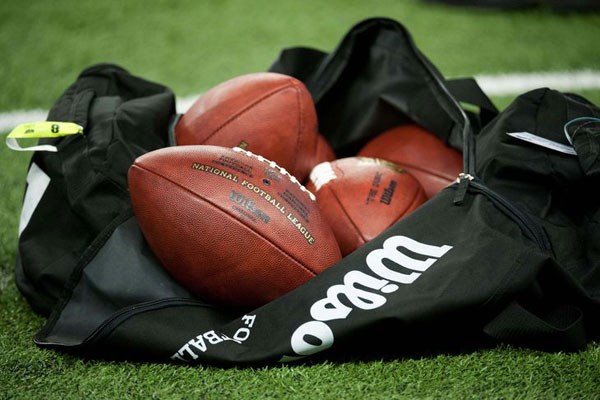Experiments Reveal How Footballs May Have Become Depressurized

01/27/2015
By Ed Brennen
If Bill Belichick and the New England Patriots need help proving they didn’t illegally tamper with the pressurization of their footballs, they can point to detailed experiments conducted this week by David Willis, an assistant professor in the Department of Mechanical Engineering.
Willis is an expert in aerodynamics and computational fluid dynamics. He says he can offer a perfectly plausible scientific explanation that can account for the Patriots’ footballs being 2 PSI under the NFL minimum of 12.5 PSI — without the team having to tamper with them.
As his preliminary tests show (pdf), it all depends on when the Patriots pumped up their footballs, as well as the timing and extent of the external temperature changes after the referees inspected the footballs.
Willis’ possible explanations run counter to theories posed by several other armchair gridiron scientists, including 2014 Commencement speaker Bill Nye, aka Bill Nye the Science Guy.
Willis, who has a Ph.D. from MIT, emphasizes that he is only offering hypotheses for “DeflateGate,” which he points out should technically be called “DepressureGate.”
“Belichick said (in his press conference Saturday) that they rub the balls before they submit them for testing. This would heat the skin and cause it to slightly contract, squeezing the air more and thus possibly causing an artificially higher pressure before testing,” Willis says.
“I think combining, A, the effect of air temp due to pumping, B, the effect of skin stiffness due to temperature and C, the overall change in temperature between the test room and the football field, the 1.5-2.0 PSI change is perfectly possible,” he says.
One common question has been why were the Indianapolis Colts’ footballs not below the legal limit while the Patriots’ were during the AFC Championship Game in Foxboro. Willis has a simple theory.
“They pumped their balls up much earlier than the game and probably tested and adjusted to lie within range,” he says. “Thus, their temp differential would be less than the Patriots’. ”
Willis adds that this theory supports the idea that the Colts wanted the Patriots to get caught.
“This is especially critical if they wanted to show the Pats were cheating and they weren't,” Willis says. “Eliminate as much pressure-temperature dependence to highlight potential improprieties.”
Edwin Aguirre contributed to this report.
